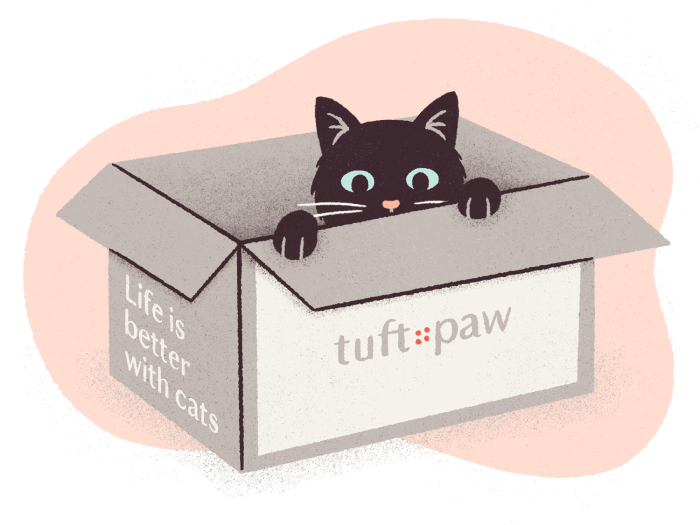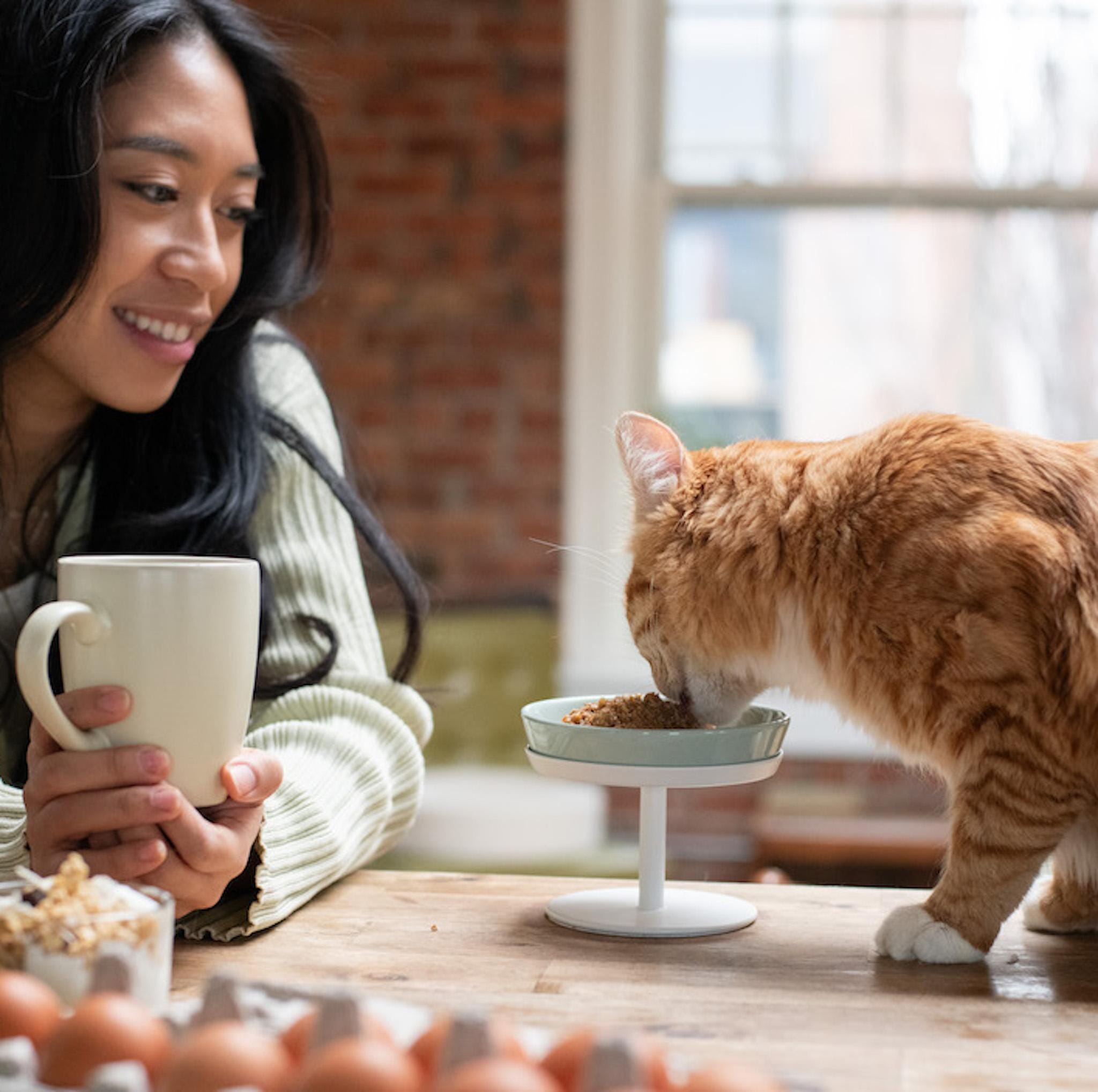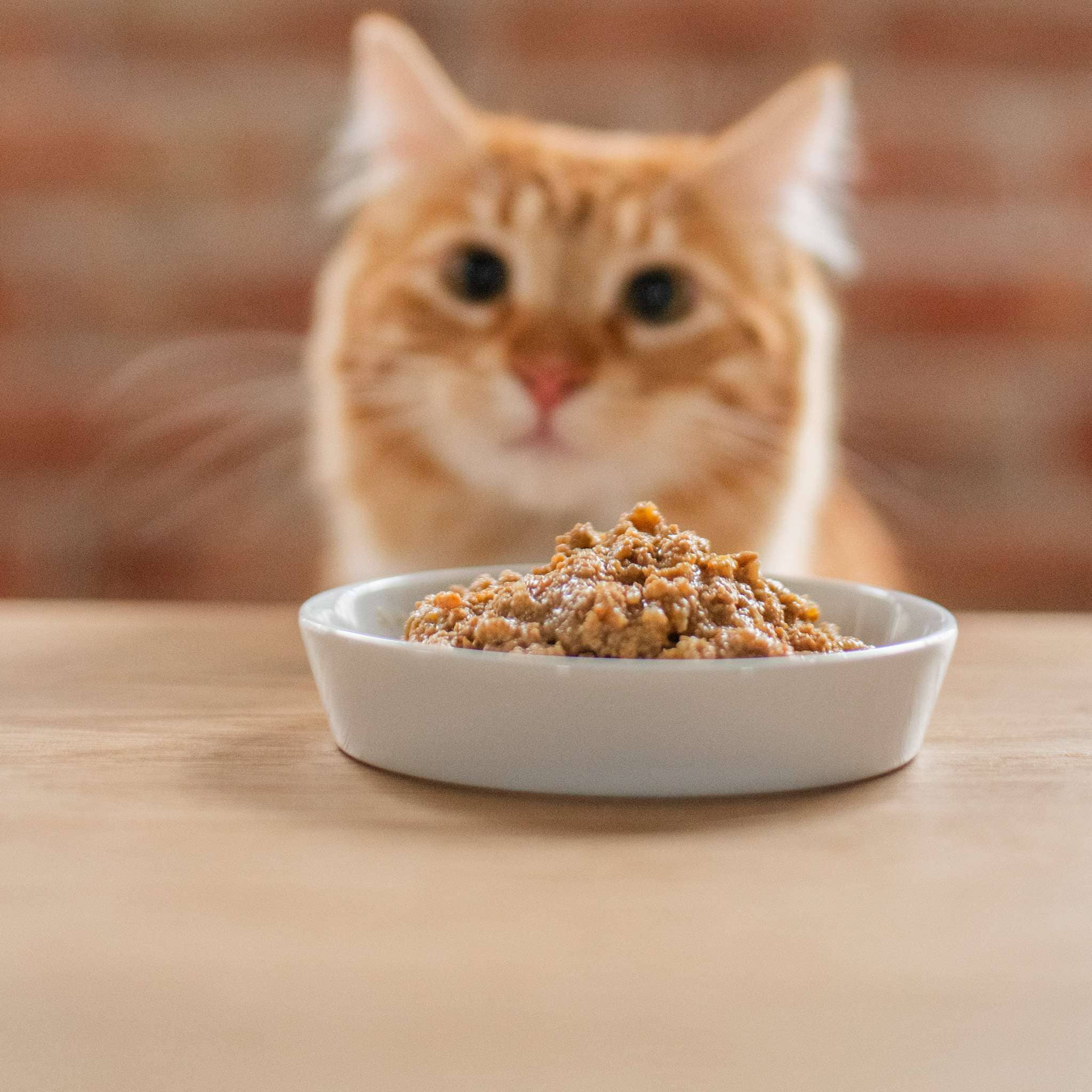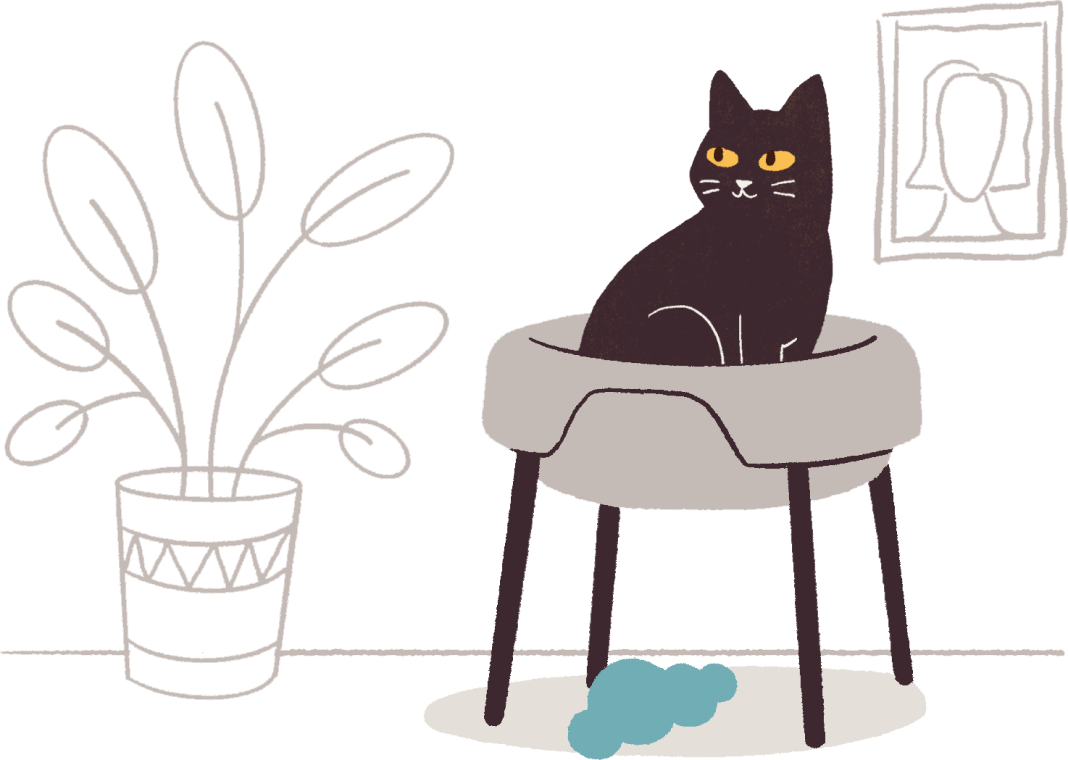Cats can be picky eaters, and we cat parents know that sometimes their food can sit untouched for a while. This is no problem with dry food, but wet food should certainly not be sitting out all day at room temperature. So how long exactly can wet food sit out? That’s exactly what we’ll answer in this article, as well as provide some extra tips around feeding and possible explanations for why your cat doesn’t scarf down their wet food immediately.
Here at tuft + paw, we are cat experts. We're intimately familiar with the cat food features that are most important to cats and cat parents alike. The information in this article is based on consultation with a feline nutritionist, extensive online research, and our own experience as cat parents.
How Long Can Wet Cat Food Sit Out?
Wet cat food can be safely left out at room temperature for a maximum of two hours. After this point, bacterial growth on the food accelerates and increases the risk of foodborne illness and digestive problems. The food will also start to dry out and become less appetizing, neutralizing the hydrating benefits—which for most cat parents is the whole reason we feed our cats wet food in the first place! Cats may be built to digest raw meat, but they care about flavor and texture, and spoiled food will leave them with an upset tummy just like us. Fresh food is always best!
Why Does My Cat Leave Wet Food In the Bowl?
If you find your cat leaving wet food in the bowl, there could be several reasons behind this behavior:
Your Cat Needs Smaller Portions
Cats are small, and therefore have small stomachs. You might just be putting too much food in the bowl for them to finish in one sitting. Try feeding them smaller serving sizes to see if they finish the whole meal. Keep in mind cats may come back after an hour or two to finish their food. Bacterial growth becomes a problem if they wait multiple hours before coming back.
You’re Serving Wet Food at the Wrong Time
Cats thrive on routine and love a consistent mealtime schedule. If you free feed them dry kibble and only provide wet food once per day, they may have already eaten their fill of dry food and not be hungry. To remedy this, you could stop free feeding and switch to set mealtimes so your cat has time to build up an appetite. If you continue free feeding them dry food, make sure to remove access to their dry food when you serve the wet food, so they only have one food option at a time.
You could also switch them entirely to wet food, but you should first determine if this is the best option for your cat. Many cats benefit from a mix of wet and dry food.
@tuftandpaw Ensure you're correctly serving your cat's food by creating a positive atmosphere and approaching mealtime with excitement and enthusiasm. Call your cat over when it's time to eat to prevent the food from sitting out too long. Avoid leaving wet food unattended for extended periods, as it can lose appeal and moisture. Establish a consistent mealtime schedule to add routine to your cat's feeding habits. By incorporating these tips and serving wet food properly, you can offer your cat a delightful and satisfying dining experience. #catfoodtips #catfood #catfoodmeals #catfoodpreparation #catfoodforcats #servingcatfood #catmealtime #preparingcatfood #catfoodbowl ♬ Dance You Outta My Head - Cat Janice
Your Cat Doesn’t Like Their Food
Just like humans, cats have preferences when it comes to food. If your cat regularly leaves food in the bowl, it could be a sign that they don't enjoy the flavor or texture of the food. Consider trying out different wet cat food brands or recipes to see if your cat prefers a different option. Your cat could also just be bored of eating the same thing every single day. Incorporating some variety will keep them more interested in their wet food.
Your Cat’s Food Bowl Is Too Deep
The depth of your cat's food bowl can affect their eating habits. If a bowl is too deep, your cat’s sensitive whiskers may come into contact with the rim when eating, causing discomfort known as “whisker fatigue”. Overstimulation of their whiskers over time can lead to stress and an avoidance of their food bowl. So if you use a deep or narrow food bowl, try switching to a wider or shallower food bowl and see if that does the trick before trying a whole new food.
Stress, Discomfort, or Illness
Stress, discomfort, or underlying health issues can also cause changes in your cat's eating habits. If your cat usually finishes their meals but suddenly starts leaving food in the bowl, you should monitor their behavior for any other signs of illness or stress. There are a myriad of possible issues that can reduce your cat’s appetite, ranging from tooth decay to kidney disease to environmental stress. If this loss of appetite persists, consult your veterinarian for professional health advice.
Note: Your cat may have a sensitive stomach or food allergy, in which case it’s worth looking into food for cats with sensitive stomachs and hypoallergenic cat food.
 Really Great Cat Food & Dock Bowl by tuft + paw
Really Great Cat Food & Dock Bowl by tuft + paw
Cat Food Serving Tips
To ensure your cat enjoys their meals and stays healthy and well-fed, here are some serving tips to keep in mind:
Don’t Mix Old and New Food
When serving your cat wet food, never add fresh food to old leftovers. Always serve fresh food (or recently refrigerated food) to prevent spoilage and illness. This will be safer, more nutritious, and taste better.
Warm Up Cold Food
Temperature is an important aspect of food for cats. Room temperature is always best, and most cats will not like cold food straight out of the fridge. Briefly microwave cold food before serving until it reaches room temperature. Be sure to test the temperature to avoid overheating. You don’t want to burn your buddy!
Refrigerate Leftovers in Airtight Container
Most cans of wet cat food are too large for a single serving, so you can serve one small portion and refrigerate the remainder of the can in an airtight container. Wet food can be preserved in the fridge for 2-3 days. Similarly, if your cat doesn't finish their meal after a couple hours, you can refrigerate the leftovers in an airtight container. Beyond two hours, any leftovers should be thrown out.
Establish a Routine
We’ve already mentioned this, but it’s worth saying again: cats thrive on routine! It’s best to establish regular feeding times if possible. Consistency can help prevent over/undereating, reduce stress, and allow you to more closely monitor the eating habits of your cat.
Incorporate Variety
Offer your cat a variety of flavors and textures to keep mealtime interesting. Rotating between different brands and protein sources can prevent boredom and keep your cat interested in eating.
Conclusion
Feeding your cat properly is one of the most important parts of cat parenthood. If you remember one thing from this article, let it be this: your cat’s wet food should sit out for no more than two hours! By following this guideline, you can be sure your cat is receiving tasty, hydrating, nutritious, and safe wet food every day. Incorporate the other tips to optimize your cat’s mealtime and keep them happy and food-motivated for years to come. Good luck!






